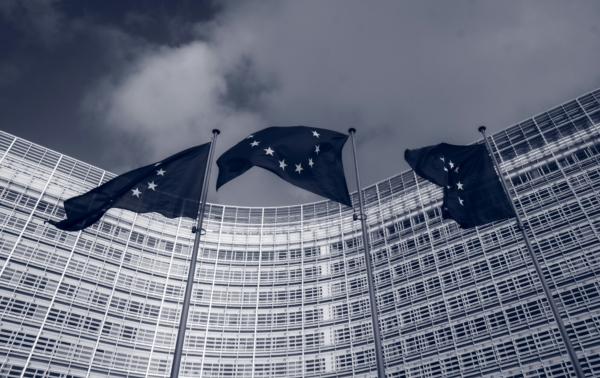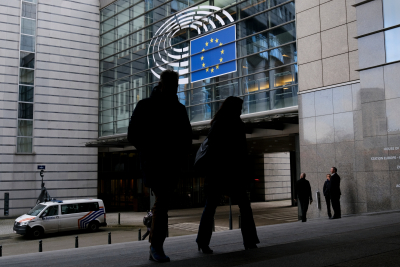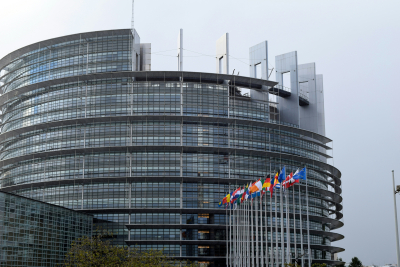A guest post by Anna Alberts of Open Knowledge Foundation Germany.
EU-spending is often portrayed as intransparent and at risk of corruption or waste. Now that the debate about the EU across member states heightens, those in favour of less Europe paint a picture of money-squandering institutions and unaccountable “eurocrats”. But with so much rumour and speculation it begs the questions: how does the EU actually spends its money? How transparent are EU budgets and funds and can how we track EU spending?
In the past, Open Spending and Open Knowledge International have already done in-depth research on this topic in the report: “How does the EU spend its money”[1]. This report shows one thing clearly: EU spending is complex.
What makes EU spending so complex? First, the EU does not have the common government tasks and responsibilities of a country. Brussels is not responsible for health care, education, unemployment benefits, etc. The EU mainly operates on economic affairs, the common market, joint security and foreign affairs, but it still shares these competencies with the member states. This makes the budget of the EU look very different to that of a member state. Only a small portion of the budget is used to support direct operations. The majority of the EU budget is channelled back to the member states a through complex systems of subsidies and funds.
Second, the EU has two budget cycles. The operational budget is set on an annual basis. But the main budget is the Multi Annual Financial Framework (MFF) is set in seven year cycles. In the MFF, priorities are set and funds are allocated for the different subsidies, funds and programs from the European Union. It is decided in a complex process between the European Commission, the European Council and the European Parliament. We are currently half-way the 2014-2020 cycle for the MFF, the 2016 operational budget was decided in December 2015, and the 2017 budget is in the making.
Third, different funds all have different rules, priorities and eligibility criteria. For example, all regions are divided into different stages of development based on their GDP as compared to the GDP of the EU on average for the ERDF and the ESF. For the Cohesion, the GDP of the member state is taken for deciding on allocation etc. The fact that the EU budget mainly consist of funds and subsidies, is set on a seven year basis, and every fund has its own criteria makes EU spending very complex.
Classification of EU regions with regards to the EU Regional Policy from 2014 to 2020.. Less developed regions = Red, Transition regions = Yellow, More developed regions = Blue. CC BY-SA 3.0
But does complexity mean there is a lack of transparency?
On to our second question: how transparent are EU budgets and funds, and can we track the EU spending? The EU produced a number of data portals where budget and spending data on the EU level is published in open formats. The annual budget of the EU which covers the institutions own operation costs can be found here and the legislation here. All funds that are directly managed by the EU can be found in the Financial Transparency System of the EU. Even for the funds that are co-managed by the EU and the Member States such as the European Structural and Investment funds the data on EU level is available online: https://cohesiondata.ec.europa.eu/
The crux here is that most funds are co-managed by the EU and Member States, the data the EU can provide is what they have allocated per fund, region, and priority. The expenditure and beneficiary data is not universally available at this level. This data is available on many different regional and national portals, in different data formats, from PDFs to fully interactive websites. So although the data is available, it is hard to compare and to track EU money.
That is why, through our newest project in OpenBudgets.eu, we have started tracking the funds. We have done our first pilots and tested whether we could track EU spending from the ground up. For our second project on Cohesion Funds, we will bring all this data together in one portal together with the team from “Follow the Subsidies”. That way we can finally answer the question of how does EU spends its money, or better said: “How do Member States spend the EU’s Money?”
[1] Elisabeth Druel and Pierre Chrzanowski (2015) Where Does Europe’s Money Go. A Guid to EU Budget Data Sourceshttp://community.openspending.org/resources/eu/pdf/WhereDoesEuropesMoneyGo.pdf (retrieved June 2016).
 Anna Alberts leads the EU research project OpenBudgets.eu. She has a degree in international development studies and international relations and worked as desk officer for data- and geopolitics at the Ministry of Foreign Relations of the Netherlands. Anna develops Social Innovation projects at the Peace Innovation Lab in Berlin.
Anna Alberts leads the EU research project OpenBudgets.eu. She has a degree in international development studies and international relations and worked as desk officer for data- and geopolitics at the Ministry of Foreign Relations of the Netherlands. Anna develops Social Innovation projects at the Peace Innovation Lab in Berlin.







